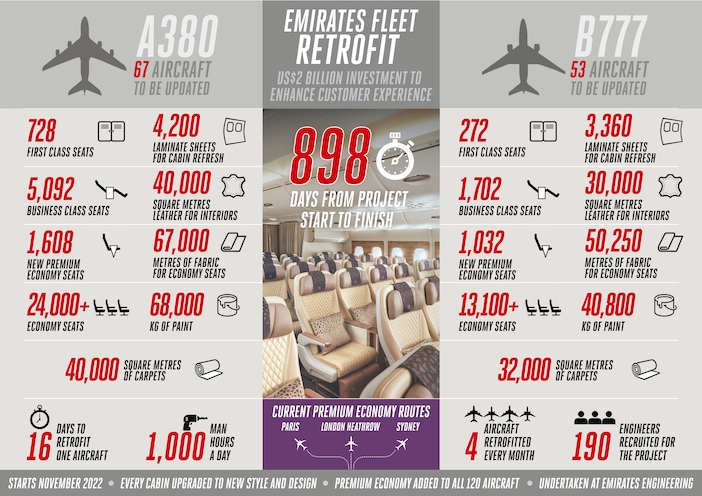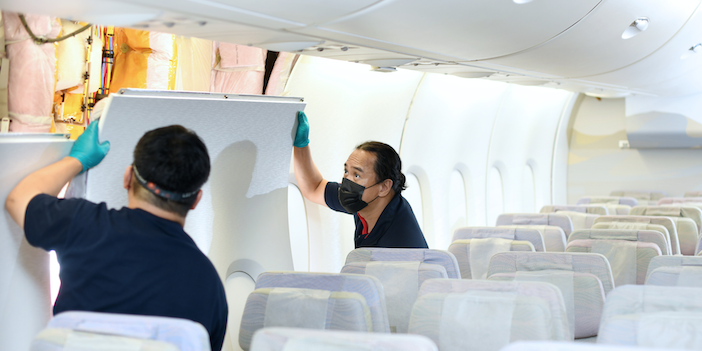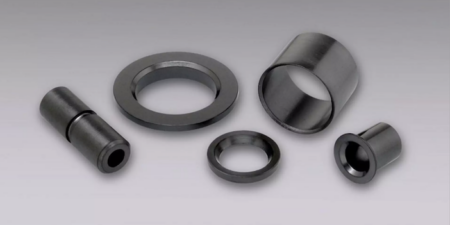Emirates has revealed its strategy for a major aircraft interiors project, which will see upgrades for the entire cabins of 120 Airbus A380 and Boeing 777 aircraft – two of the largest commercial aircraft types in service today. The project, which officially begins in November, is being managed entirely by the team at Emirates Engineering in Dubai and represents a ‘multi-billion’ dollar investment in the customer experience.
The airline is aiming to completely retrofit four aircraft from start to finish every month, continuously, for over two years. The superjumbos will be the first to be upgraded, and once the 67 earmarked A380s are refreshed and back in service, 53 B777s will then follow. In all, when the project is complete in April 2025, Emirates Engineering will have installed nearly 4,000 brand new premium economy seats (currently only available to customers travelling on A380 routes to London, Paris and Sydney), refurbished 728 first-class suites, and upgraded more 5,000 business class seats to a new style and design.
In addition, the floor and staircase carpets on the aircraft will be upgraded, and cabin interior panels refreshed with new tones and design motifs, including those of ghaf trees, a species native to the UAE.

In a statement, Emirates said that, “No other airline has handled a retrofit of this magnitude in-house, and there’s no blueprint for such an undertaking. Therefore the Emirates Engineering teams have been planning and testing extensively, to establish and streamline processes, and identify and address any possible snags.”
These trials began on an A380 in July, in which engineers took each cabin apart piece-by-piece and logged every step. From removing seats and panelling, to undoing bolts and screws, every action was tested, timed and mapped out. Any potential impediments for the plan to complete the installation of Emirates’ new premium economy class or the retrofit of the remaining three cabins within 16 days were flagged and documented for expert teams to review and address.
A few opportunities were also identified during the trials. For example, the engineers discovered that the interior space and wide doors of food catering trucks meant they could be easily repurposed to move cabin parts destined for refurbishment from the aircraft to the workshop for their refresh.
Further efficiencies could come to light by the time the retrofit programme starts in earnest in November, as a cross-disciplinary team has been assembled to review the planning process regularly, address any issues, and track updates on various aspects of the project, such as procurement, staffing and training.






